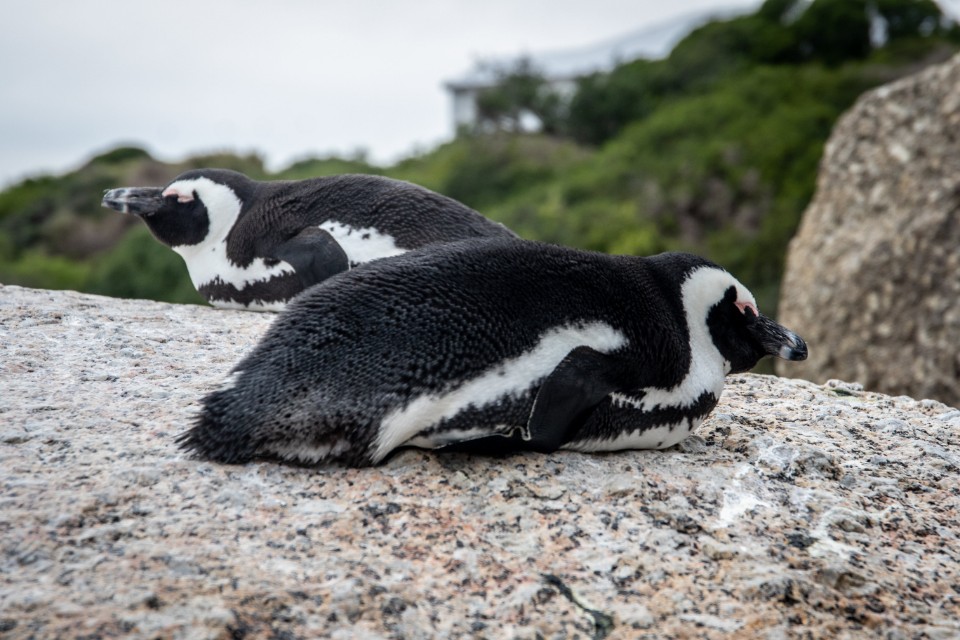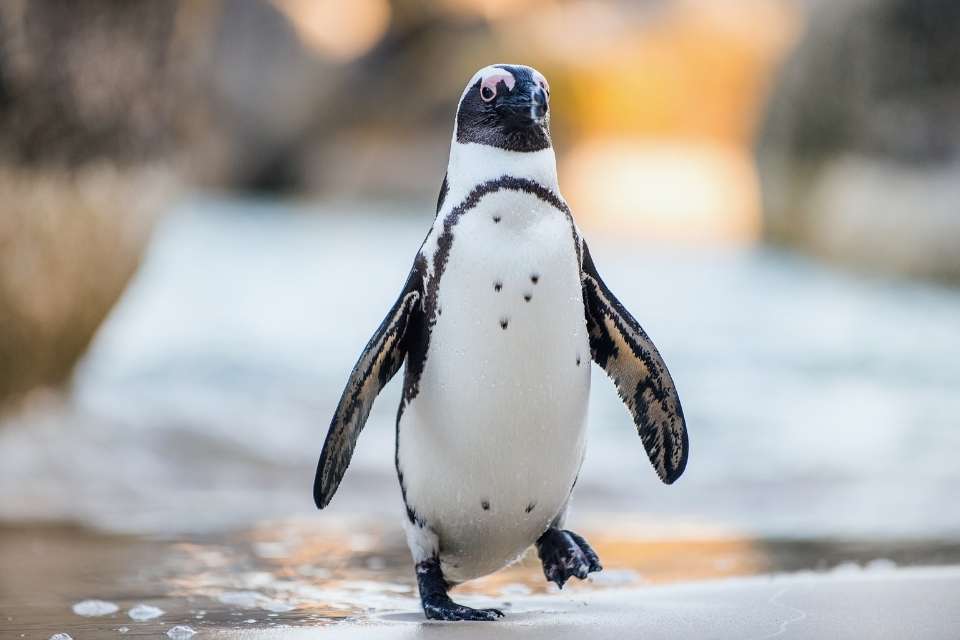Have you ever wondered if penguins have feathers or fur? Well, let’s dive into the fascinating world of these unique aquatic birds and uncover the truth about their body covering.
Penguins have feathers, not fur. These feathers play a crucial role in their survival and are specially adapted to their aquatic lifestyle. The structure and composition of penguin feathers enable them to thrive in the cold ocean waters and harsh environments they inhabit.
Join us as we explore the function of penguin feathers, their adaptations, and the incredible physical features that make these birds so fascinating.
Let’s uncover the secrets behind their plumage and understand how they stay warm and dry in their icy habitats.
Key Takeaways:
- Penguins have feathers, not fur, which help them stay warm and regulate their body temperature in cold ocean waters.
- The unique structure of penguin feathers allows for insulation, waterproofing, buoyancy, communication, and display.
- Penguin feathers are specially adapted to their aquatic environment, with different species exhibiting variations in thickness and patterns.
- Emperor penguins, one of the most iconic penguin species, rely on their feathers for insulation and efficient hunting in icy waters.
- From birth to adulthood, penguins develop a full coat of feathers that help them survive in their challenging environments.
The Function of Penguin Feathers
Penguin feathers serve a variety of functions that are crucial to their survival in their unique aquatic habitat. These feathers not only provide insulation, but also serve as a waterproof covering, aid in buoyancy, facilitate communication, and play a role in courtship displays.
Let’s explore the different functions of penguin feathers in detail:
Insulation:
The downy underlayer of penguin feathers acts as an effective insulator, helping to trap air close to the penguin’s body. This layer provides a layer of warmth that prevents heat loss in the cold ocean waters, allowing penguins to regulate their body temperature and stay warm even in freezing conditions.
Waterproofing:
The outer feathers of penguins are coated with a special substance that makes them waterproof. This waterproofing is essential for penguins as it helps to keep their bodies dry and prevent them from losing body heat through direct contact with the water.
It also enables penguins to swim efficiently by reducing drag and aiding in their streamlined movement through the water.
Buoyancy and Streamlining:
Penguin feathers are designed to trap air, which provides buoyancy in the water and helps penguins float effortlessly. The arrangement of their feathers also contributes to their streamlined shape, allowing them to move swiftly and efficiently through the water while hunting for food.
Communication and Display:
Penguins use their feathers as a means of communication, both within their colonies and during courtship displays. Some penguin species have distinctive feather patterns or colors that they display during courtship rituals to attract mates.
Additionally, the rustling or flapping of feathers can convey specific messages among penguins, helping them to coordinate activities and maintain social connections.
In conclusion, penguin feathers serve a multitude of functions that are vital to their survival in their cold and aquatic environments.
From insulation to waterproofing, buoyancy, communication, and courtship displays, these feathers are a remarkable adaptation that enables penguins to thrive and thrive in their unique habitat.
Penguin Feathers and Adaptations
Penguin feathers are truly remarkable adaptations that enable these aquatic birds to thrive in their unique environments. Let’s explore some fascinating facts about penguin feathers and how they contribute to their survival.
Penguin Characteristics
One of the key adaptations of penguins is their plumage, which is composed of feathers. These feathers play a crucial role in helping penguins regulate their body temperature and cope with the cold ocean waters they inhabit.
The unique structure of penguin feathers allows them to trap air, providing insulation and keeping them warm even in freezing temperatures.
Penguin Plumage
Penguin plumage consists of different layers that serve specific functions. The waterproof outer feathers repel water, ensuring penguins are not weighed down by moisture and allowing them to swim efficiently.
Beneath these outer feathers, a dense layer of downy feathers provides excellent insulation, keeping penguins warm even in icy conditions. This combination of waterproof and insulating feathers is essential for their survival.
Penguin Adaptations
Not only do penguin feathers provide insulation, but they also serve other important adaptations. Some penguin species have distinctive feather patterns that play a role in courtship displays, signaling readiness to mate.
Additionally, penguins use their feathers to communicate by rustling them, creating unique sounds that can convey various messages to other penguins.
In summary, penguin feathers are essential adaptations that enable these charismatic birds to thrive in their demanding habitats. Their unique structure and composition provide insulation, waterproofing, and even communication capabilities.
Penguin feathers truly showcase the incredible adaptations of these remarkable creatures.
The Thickness of Penguin Feathers
When it comes to penguin feathers, their thickness plays a crucial role in protecting these remarkable birds from the harsh conditions of their icy habitats.
The thickness of a penguin’s coat of feathers can vary depending on their species and the region they inhabit. Penguins living in colder regions tend to have thicker coats, providing them with additional insulation against the freezing temperatures.
The dense downy underlayer of feathers is particularly important for insulation purposes. This fluffy layer traps air close to the penguin’s body, creating a warm and cozy environment.
Additionally, the outer feathers of penguins are specially designed to be waterproof. This waterproofing prevents the feathers from becoming saturated with water, helping the penguins stay dry and retain their body heat even in wet environments.
Penguins rely on the thickness of their feathers to regulate their body temperature effectively. By fluffing up their feathers, they create air pockets that act as insulation, trapping warm air close to their bodies.
On the other hand, by pressing their feathers close to their bodies, penguins minimize heat loss, allowing them to conserve energy and stay warm.
The Importance of Feather Thickness for Penguin Survival
The thickness of penguin feathers is a vital adaptation that enables these incredible birds to survive in their challenging environments.
In the frigid Antarctic waters, where temperatures can drop well below freezing, the thick coat of feathers provides essential insulation, preventing heat loss and protecting the penguins from hypothermia.
This insulation is critical during the breeding season when penguins spend long periods on land, enduring harsh weather conditions.
We found that the thicker the feathers, the better the insulation. Penguins with thicker feathers were able to withstand the extreme cold more effectively and were more likely to survive in challenging conditions.
The unique design of penguin feathers and their ability to adapt to their environment have played a significant role in the success and survival of these fascinating creatures.
As we continue to study penguins and their remarkable adaptations, we gain a deeper understanding of how they have thrived in some of the harshest environments on Earth.
Emperor Penguins and Their Feathers
Emperor penguins, like all penguin species, have feathers, not fur. Their feathers play a vital role in their survival in the harsh Antarctic environment. The thick coat of feathers consists of dense down feathers for insulation and waterproof outer feathers for protection against the elements.
The unique structure of their feathers also serves another crucial purpose – providing buoyancy while swimming. This adaptation allows emperor penguins to effortlessly navigate the frigid waters and dive to great depths in search of food.
Their feathers’ ability to repel water keeps them dry and warm, even in freezing temperatures.
Beyond insulation and waterproofing, the structure of emperor penguins’ feathers enables them to hunt efficiently. The sleek and streamlined nature of their feathers reduces drag in the water, allowing them to glide swiftly through the icy depths.
This agility is essential for catching prey and avoiding predators.
Penguins from Birth to Adulthood
As penguins journey through their life cycle, their feathers play a crucial role in their development and survival. From the moment they hatch, baby penguins are covered in a soft downy plumage called “chick down.
This initial covering serves as insulation, keeping them warm in their chilly environments.
Over time, these young penguins grow and develop a full coat of feathers, similar to that of adult penguins. These feathers are specially adapted to their aquatic habitats, providing them with essential characteristics for survival.
The feathers help regulate their body temperature, keeping them warm in the cold waters they navigate.
Just like adult penguins, young penguins rely on their feathers for insulation. The structure of their feathers helps trap air close to their bodies, creating a layer of insulation that prevents heat loss.
This adaptation is crucial as they navigate the icy waters and sub-zero temperatures of their habitat.
From birth to adulthood, penguins rely on their feathers to adapt to their environment and thrive. These feathers, with their unique structure and composition, provide insulation, regulate body temperature, and ensure their survival in challenging conditions.
The remarkable adaptation of penguin feathers is a testament to the resilience and ingenuity of these fascinating birds.
Conclusion
In conclusion, penguins have feathers, not fur. These feathers are a remarkable adaptation that allows them to thrive in their aquatic habitats. The feathers serve multiple purposes, including insulation, waterproofing, buoyancy, communication, and display.
With their thick coat of feathers, penguins are well-insulated against the cold ocean waters. The downy underlayer provides insulation, while the waterproof outer feathers keep them dry and warm.
Penguins can fluff up or press their feathers close to their bodies to regulate their body temperature.
Furthermore, penguin feathers are specially adapted to their environment. The thick and dense downy layer provides extra insulation, especially in colder regions.
Some penguin species have bright and distinctive feather patterns for courtship displays, while others use the rustling of feathers as a form of communication.
In summary, penguins’ feathers are their remarkable body covering that enables them to survive and thrive in their challenging environments.
From birth to adulthood, these feathers play a crucial role in regulating body temperature, providing insulation, and facilitating various behaviors. Penguins truly are fascinating creatures with their unique adaptations and captivating plumage.
FAQ
Do penguins have fur or feathers?
Penguins have feathers, not fur.
What purpose do penguin feathers serve?
Penguin feathers serve multiple purposes, including insulation, waterproofing, buoyancy, communication, and display.
How do penguin feathers help with insulation?
The downy underlayer of penguin feathers provides insulation, keeping them warm in cold ocean waters.
How do penguin feathers help with waterproofing?
The outer feathers of penguins are waterproof, helping to keep them dry and warm in their aquatic habitats.
How do penguins regulate their body temperature using their feathers?
Penguins can fluff up or press their feathers close to their bodies to regulate their body temperature in varying conditions.
How do penguins use their feathers for communication and display?
Some penguin species have bright and distinctive feather patterns for courtship displays, while others use the rustling of feathers as a form of communication.
Do penguin feathers vary in thickness among species?
Yes, the thickness of a penguin’s coat of feathers varies among species, with thicker coats in colder regions for additional insulation.
How do penguin feathers adapt to the aquatic environment?
The waterproof outer feathers provide a barrier against the cold, while the dense downy underlayer provides insulation for penguins in aquatic environments.
Do Emperor penguins have feathers or fur?
Emperor penguins, like all penguin species, have feathers, not fur. Their feathers provide insulation, protection, and buoyancy while swimming.
How do penguin feathers change from birth to adulthood?
Baby penguins hatch with a soft downy covering called “chick down.” As they grow, they develop a full coat of feathers similar to that of adult penguins.


